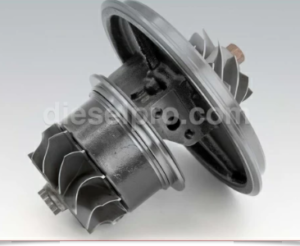
Regular maintenance at this interval is crucial to ensure the longevity and optimal performance of your Caterpillar 3208 marine engine. The following tasks should be performed:
Inspecting the Alternator
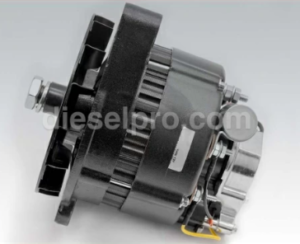
Purpose: The alternator charges the battery and powers electrical systems. Regular inspection prevents electrical failures.
Procedure:
- Visual Inspection: Check for physical damage, corrosion, and secure mounting.
- Belt Tension: Ensure the drive belt is properly tensioned and free from cracks or fraying.
- Electrical Output: Use a multimeter to verify voltage output matches specifications.
- Connections: Inspect wiring for signs of wear or loose connections.
Note: A malfunctioning alternator can lead to battery drain and electrical system failures.
Inspecting the Crankshaft Vibration Damper
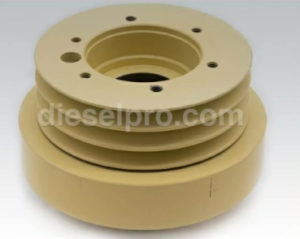
Purpose: The vibration damper reduces torsional vibrations, protecting the crankshaft and connected components.
Procedure:
- Visual Inspection: Look for signs of wear, cracks, or oil leaks.
- Physical Check: Ensure the damper is securely mounted and free from wobble.
- Replacement: If any defects are found, replace the damper as per manufacturer guidelines.
Note: A failing damper can lead to severe engine damage due to uncontrolled vibrations.
Inspecting Engine Mounts
Purpose: Engine mounts secure the engine to the vessel, absorbing vibrations and maintaining alignment.
Procedure:
- Visual Inspection: Check for cracks, corrosion, or deterioration in rubber components.
- Alignment Check: Ensure the engine remains properly aligned with the propeller shaft.
- Torque Verification: Confirm that mounting bolts are tightened to specified torque values.
Note: Damaged mounts can cause excessive vibration, misalignment, and stress on the drivetrain.
Inspecting and Adjusting Valve Lash
Purpose: Proper valve lash ensures efficient engine breathing and prevents valve damage.
Procedure:
- Engine Cool Down: Allow the engine to cool completely.
- Access Valves: Remove valve covers to access rocker arms.
- Measurement: Use a feeler gauge to measure the gap between the rocker arm and valve stem.
- Adjustment: If necessary, adjust the gap to match manufacturer specifications.
- Reassembly: Reinstall valve covers and check for leaks.
Note: Incorrect valve lash can lead to poor engine performance and increased wear.
Testing or Exchanging Fuel Injection Nozzles
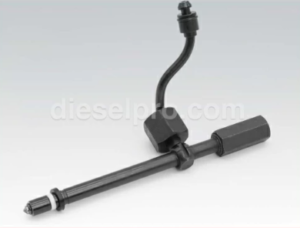
Purpose: Fuel injectors deliver fuel into the combustion chamber. Proper function ensures efficient combustion.
Procedure:
- Removal: Carefully remove injectors from the engine.
- Testing: Use specialized equipment to test spray pattern, opening pressure, and leakage.
- Cleaning or Replacement: Clean injectors if possible; otherwise, replace faulty units.
- Reinstallation: Install injectors with new seals and torque to specifications.
Note: Faulty injectors can cause misfires, poor fuel economy, and increased emissions.
Inspecting or Adjusting Fuel Ratio Control
Purpose: The fuel ratio control regulates fuel delivery based on engine load and speed.
Procedure:
- Inspection: Check for wear, corrosion, or damage to the control mechanism.
- Adjustment: If necessary, adjust settings to match performance requirements.
- Testing: Verify that fuel delivery corresponds appropriately to engine demands.
Note: Improper fuel ratio can lead to inefficient combustion and engine damage.
Inspecting the Heat Exchanger
Purpose: The heat exchanger cools engine coolant using seawater, preventing overheating.
Procedure:
- Visual Inspection: Check for leaks, corrosion, and blockages.
- Cleaning: Remove and clean the core to eliminate scale and marine growth.
- Pressure Testing: Ensure the exchanger maintains proper pressure without leaks.
- Reassembly: Reinstall with new gaskets and seals as needed.
Note: A clogged heat exchanger can cause engine overheating and failure.
Inspecting the Starting Motor
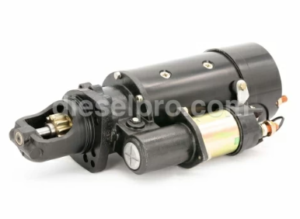
Purpose: The starting motor initiates engine operation. Regular inspection ensures reliable starts.
Procedure:
- Visual Inspection: Look for physical damage, corrosion, and secure mounting.
- Electrical Testing: Verify voltage and current draw during operation.
- Connections: Ensure wiring is intact and terminals are clean and tight.
Note: A failing starter can leave you stranded, especially in critical situations.
Inspecting the Turbocharger
Turbo Cartridge for Caterpillar 3208 Turbo
Purpose: The turbocharger increases engine efficiency by forcing more air into the combustion chamber.
Procedure:
- Visual Inspection: Check for oil leaks, cracks, and foreign object damage.
- Shaft Play: Measure axial and radial play to assess bearing condition.
- Cleaning: Remove carbon deposits from the turbine and compressor wheels.
- Reassembly: Ensure all components are securely fastened and free from debris.
Note: Turbocharger issues can lead to reduced power and increased fuel consumption.
Disclaimer
For detailed procedures, specifications, and safety precautions, always refer to the official Caterpillar Operation & Maintenance Manual for the 3208 marine engine.
Additional Resources
Practical Guide To Servicing The Caterpillar 3208 Marine Engine
Marine CAT 3208 Component Maintenance Life
Caterpillar 3208 Injectors: High-Quality Aftermarket Options from Diesel Pro Power
The History of the Caterpillar 3208 Engine
Common Applications of the Caterpillar 3208 Engine
Troubleshooting Common Issues with the Caterpillar 3208
Maintenance Tips for Maximizing the Life of Your Caterpillar 3208 Engine
Comparing the Caterpillar 3208 to Other Marine Engines



 Free US Calls: 1-888-433-4735
Free US Calls: 1-888-433-4735 International: 305-545-5588
International: 305-545-5588
